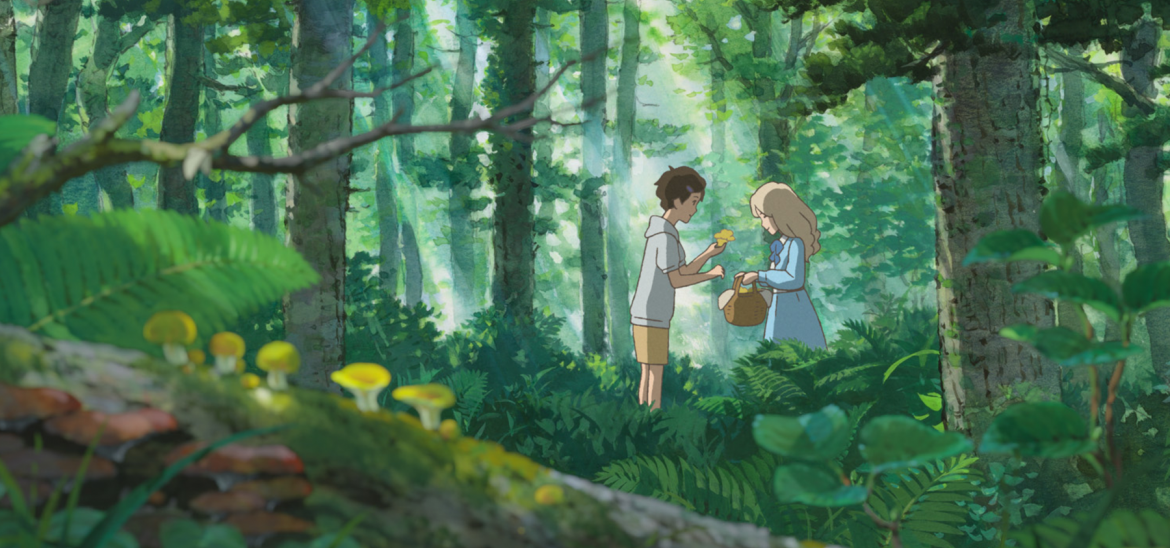Into Film Clubs
Find out everything you need to know about starting an Into Film Club.



When Marnie Was There is an enchanting new animation from legendary Japanese filmmakers Studio Ghibli. Made with characteristic heart, ambition and loving attention to detail, the film is about Anna, a troubled and socially awkward girl sent by her foster family to stay with her aunt and uncle in the countryside for the summer, in the hopes that will help her work through her emotional difficulties and soothe her related asthma. Out exploring one day, she stumbles across a mysterious crumbled mansion, where a golden-haired girl named Marnie appears to be living, and the two girls strike up a deep and strong friendship.
Written by Joan G. Robinson, the original young adult novel had Anna sent away from London to stay on the Norfolk coast, but for the purposes of the film the story has been relocated to modern-day Japan, with Anna sent to the northern island of Hokkaido. Whether it is moving home, starting at a new school, or a story of wartime evacuation, the theme of children finding themselves somewhere new and strange is extremely common in films, and is a recurring characteristic in Ghibli's own work.
While mostly faithful to its source material, the filmmakers have added some original elements. For example, in the film Anna has a love of drawing. This is not merely incidental. If anything has defined Studio Ghibli, it is their belief in the power of drawing and images as tools of expression and creativity. At the start, Anna states that she feels outside of the circle, observing her peers but not engaging with them. As the film develops, her observational talents become increasingly aligned with her own improved emotional state. Through drawing, Anna is able to better express herself and her emotions.
Several Ghibli films have drawn on Japanese children's literature for their source material - such as Kiki's Delivery Service, Howls Moving Castle and Grave of the Fireflies - and all of their work is infused with very specific Japanese cultural reference points. But this is not the first time the studio has adapted a classic English work, or cited their influences. The director Hiromasa Yonebashi's previous film, Arrietty, was an adaptation of Mary Norton's The Borrowers, while Ghibli co-founder, the legendary Hiyao Miyazaki, produced a famous list of 50 great pieces of children's literature, 48 of which were written outside of Japan and included such titles as Alice In Wonderland, The Little Prince, and Swallows and Amazons, as well as When Marnie Was There itself.
To give away much about the mysterious Marnie and her friendship with Anna would be to spoil the film, but their's is an intense, tender friendship that has a profound impact on them both. Each are working their way through difficulties, a loneliness magnified by the shared absence of parents. Through their friendship they learn to understand each other's emotions in greater ways and channel them into something positive. Anna's drawing improves through her relationship with Marnie and she responds to her warmth, wisdom and apparent confidence. Their friendship is most neatly encapsulated in a beautiful scene of the two dancing in a grassy field, set to the film's poignant score, which has a pivotal impact on Anna's emotional wellbeing.
Many tropes from previous Ghibli films can be seen in When Marnie Was There. The story takes in ghosts, the power of art, nature and human memories. There are characters with ambiguous identities, a story centred around a secret place, a focus on travel, misunderstood characters, pivotal roles for elderly women, and of course a young woman finding herself somewhere new and unknown at its heart. But the film does not contain the same fantastical elements of their most iconic films like Spirited Away and Princess Mononoke. Instead this is a quieter, more introspective (yet still mystical) film whose magic manifests itself slightly differently.
In many ways, When Marnie Was There is expanding on the complex emotional issues outlined in Pixar's Inside Out. Studio Ghibli and Pixar have long been great fans of one another, with animators from each regularly visiting the other, so it is perhaps not surprising that they share similar goals and ambitions. Unlike children's literature, which regularly explores more sensitive topics, animated films tend to favour a lighter approach to their storytelling. But in this film Anna is learning to deal with profound issues around pain, grief, abandonment and depression. These issues are all explored credibly and with great sensitivity, never patronising the intended young audience or sacrificing the film's magical qualities.
Much of this is conveyed through remarkably subtle storytelling and attention to detail. Ghibli films are known for their focus on blue skies and white clouds, but here the sky is cloudier and greyer, reflecting Anna's troubled state of mind. As Anna's mood begins to improve, so the colours become that much brighter, most vividly seen in a beautiful sequence following a summer storm, where the green of the grass becomes richer and fresher. Even the lovingly painted backgrounds appear to become more beautiful as the film's themes develop.
When Marnie Was There is also a poignant send off to Studio Ghibli itself. Following the retirement of Miyazaki, the studio has placed itself on a hiatus, with no current plans to release any more films. Given the huge impact they have had on audiences around the world and the sadness felt at the thought of them not producing any more work, it is perhaps fitting that their final film is one that is at once celebratory but also about coming to terms with saying goodbye.
Explore the themes of the film further with our Into Film Recommends podcast below, or log in to SoundCloud to download the podcast and listen on the go.
The Into Film Recommends Podcast Series is also available on iTunes
Viewing 4 of 4 related items.

Get in touch with your article ideas for the News and Views section.